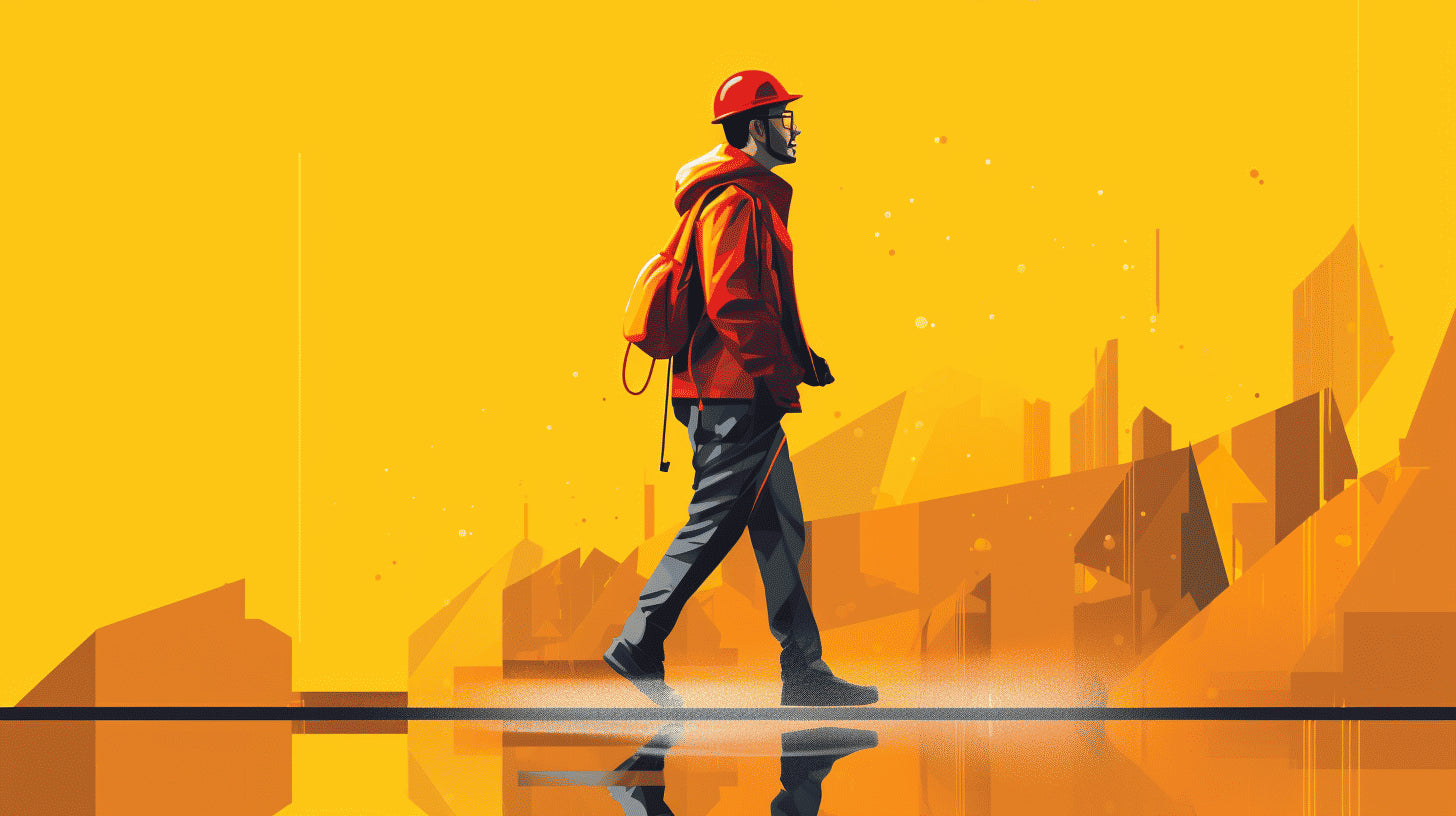At first glance, rain gear might not seem like an essential tool for construction workers. But anyone who has tried to wield a hammer in a downpour, navigate a slippery scaffold, or protect their power tools from a sudden shower knows the difference quality rain gear can make. It's not just about comfort—it's about safety, efficiency, and even saving on costs in the long run. In a profession that often exposes workers to the elements, having the right kind of protection from the weather can mean the difference between a job well done and a potential safety hazard. In this article, we'll explore the crucial role that quality rain gear plays in the construction industry, the promising growth of the rainwear market, and the various options available for those seeking the best gear out there.
The Importance of Quality Rain Gear in Construction
Workplace safety should always come first, especially in sectors like construction where dangerous situations can crop up quite readily. Remarkably, construction workers make up a whopping 21% of all work-related fatalities. Given this startling fact, equipping your team with the right tools is critical, and, when it comes to working conditions that involve wet and windy weather, high-quality rain gear for construction is a non-negotiable.
Workplace Fatality Rate
Zooming in on the numbers, there is a concerning trend in the construction industry. The fatality rate among construction workers is alarmingly high, with 10.2 out of every 100,000 workers suffering a fatal injury in 2020 alone. This statistic underscores the importance of taking all necessary safety measures within our control, with the investment in proper rain gear being a key aspect of that safety matrix.
Attributes of Ideal Rain Gear
So what should you be looking for when selecting the perfect rain gear? At a minimum, your choice of gear should meet the following criteria:
- Waterproof: In persistent rain, water resistance won't cut it, you need materials that offer complete water-proofing.
- Windproof: A robust windproof layer can prevent chill and maintain body warmth.
- Breathable: Breathability ensures that sweat and moisture evaporate easily, preventing discomfort and potential health risks.
- High Quality: Always opt for high-quality materials that can withstand the harsh conditions of a construction site.
In essence, the ideal choice is one that melds maximum protection and optimal comfort for extended periods, such as those provided by Essential Rain Gear for Construction.
Significance of Proper Gear Selection
The implications of selecting appropriate rain gear go far beyond simply keeping employees dry. Proper rain gear selection can directly impact visibility and comfort, reducing the likelihood of accidents and health issues on site.
Comfortable, well-ventilated rain gear can significantly boost morale and productivity levels even in damp, dreary conditions. The more comfortable your workers are, the less likely they are to neglect safety protocols, creating a safer and more efficient work environment.
As you can see, investing in high-quality rain gear can serve a dual purpose; it can dramatically lower the risk of weather-related accidents and boost overall productivity. This simply underlines the imperative of integrating appropriate rain gear into your general construction safety guideline.
The Growth of the Rainwear Market
The rainwear industry, once perceived as a dull, necessity-driven market, is witnessing a wave of renewed interest championed by the infusion of innovative materials, inclusive design, and fashion-forward aesthetics in rainwear. Let's delve deeper.
Current Market Value
Just a year back, in 2020, the global rainwear market was appraised at an impressive USD 886.4 million. This hefty figure signified the global need for rainwear products and the industry's innovative approaches to meeting this demand. With an emphasis on both utility and aesthetic appeal, this sizeable market value was achieved by dovetailing the elements of fashion and pragmatism found in today's raincoats, umbrellas, and other rainwear items. These products protected users from rain and made an undeniable style statement simultaneously.
Predicted Growth and Future Value
The trajectory of the rainwear market isn't expected to dwindle anytime soon. It's anticipated to grow at a steady Compound Annual Growth Rate (CAGR) of 6.4% from this year, 2021, running up to 2028. Further down the line, by 2030, the rainwear market may see a further boost, pegged to attain an estimated market value of USD 1828.0 million. This implies a CAGR of 6.2%.
This remarkable projected growth in the rainwear industry can be attributed to a host of key drivers. These include the perpetual need for effective rainwear due to unpredictable weather patterns, the ongoing global climate change crisis, and the surge of fashion-conscious consumers who demand a blend of utility and style in their rainwear. The increasing prevalence of eco-conscious and sustainable practices in the manufacturing process of rainwear items is another significant factor steering this upward trend.
In essence, the rainwear industry's growth underscores a larger narrative of innovation and responsive design - one that aptly meets the world's growing demands for style, sustainable practices, and the need to stay dry in an increasingly erratic climate. With such a potent blend of influences, it's clear that the sky's the limit for the global rainwear market.
Types of Rain Gear for Construction Workers
Resourcefully equipping construction workers for weather uncertainties can drastically impact their productivity and safety. With erratic weather patterns becoming the norm, it's crucial to invest in high-quality rain gear. When it comes to selecting practical rain gear, the options are plenty. Let's explore some popular types of rain gear designed specifically to meet the safety requirements and rigors of a construction site.
High Visibility Rain Gear
High visibility rain gear is a lifesaver, quite literally! Such gear is designed with vibrant colors and reflective strips, ensuring the visibility of workers in low-light conditions or during adverse weather.
- Increases safety by reducing accident risks
- Ensures easy visibility of the wearer from a good distance
- Promotes better coordination among team members on the worksite
Remember, visibility is paramount in construction zones, and these high visibility rain gears are specifically designed to keep workers safe and seen.
Arc Flash Rainwear
Next up on the list is Arc Flash Rainwear, a must-have for those working around electric utilities. This type of gear helps protect against electrical injuries.
- Provides protection from an electrical arc flash
- Made from a product that is flame resistant and self-extinguishable
- Comfortable and flexible for easy movement
It’s invaluable when it comes to protecting workers from potential arc flash injuries, meeting various safety standards in the process.
Flame-resistant and Heavy-duty PVC Rain Suits
Lastly, we cannot overlook the importance of Flame-resistant and heavy-duty PVC Rain Suits. These rain suits offer an impervious barrier against blaze and unforgiving weather spells for workers.
- Uses heavy-duty PVC for high-resistance to wear and tear
- Designed with flame-resistant properties
- Features weatherproof seals
Whether it's the pouring rain or dangerous sparks flying around, these rain suits are specifically built to withstand the highs and lows of a demanding construction environment.
The right rain gear can make all the difference on a construction site, from enhancing worker efficiency to ensuring their safety in stormy weather or hazardous situations. Selecting these gears depends on worksite demands and employee need, and construction employers must ensure the workers are well-equipped. For an in-depth understanding of popular rain gear, don't forget to visit our list of Top Rain Gear Brands to ensure optimal protection for your team.
Conclusion
Choosing high-quality rain gear for construction work doesn't just translate to comfort and convenience, but also affects workplace safety, health, and overall work effectiveness. With the increasing demand for rainwear and its subsequent predicted market growth, investing in durable and functional rain gear illustrates an insightful move for anyone in the construction industry.
Our discussion manifests the relevance of suitability to tier rain gear, contemplating factors like high visibility, resistance to extreme conditions, and material longevity. This choice, however simple it may appear, can potentially save lives and enhance productivity in challenging, weather-affected work environments.
For construction workers who are often exposed to the unpredictable outdoor conditions, every day can bring new weather challenges. In such scenarios, investing in rain gear of unwavering quality is not just a choice, but a necessity. Prioritizing this consideration never ceases to pay off. You're not just buying a product, but safety, comfort, and work efficiency.
Speaking of investing in quality, Hurricane Raingear is home to a wide range of 100% waterproof and rip-resistant rain gear that's artfully crafted in the Pacific North West. Apart from the assurance of high-grade quality, choosing Hurricane Raingear means you’re choosing enhanced visibility, unrestricted movement, and unmatched customer support that's available seven days a week.
Stay safe, stay dry, and enhance your productivity by choosing the right gear. After all, the right tools, including your attire, contribute significantly to your work's quality and precision. Remember, when the storm rages, the Hurricane persists!
Frequently Asked Questions
-
Why is investing in quality rain gear important for construction workers?
Investing in quality rain gear is important for construction workers because it helps protect them from getting wet and cold, which can lead to discomfort, reduced productivity, and even health issues. It also enhances safety by providing better visibility and preventing slips and falls.
-
What features should I look for in quality rain gear for construction work?
When choosing rain gear for construction work, look for features such as waterproof and breathable materials, sealed seams, adjustable cuffs and hems, reflective elements for visibility, ample pockets for storage, and durable construction to withstand tough conditions.
-
Can I use any rain gear for construction work, or is specialized gear necessary?
While regular rain gear may offer some protection, it is recommended to use specialized rain gear designed specifically for construction work. Specialized gear often includes additional features like reinforced panels, high-visibility colors, and compatibility with safety harnesses.
-
How often should I replace my rain gear?
The lifespan of rain gear depends on factors like frequency of use, maintenance, and the quality of the gear itself. However, as a general guideline, it is recommended to replace rain gear every 2-3 years or sooner if it shows signs of damage or is no longer effectively repelling water.
-
Are there any additional tips for using rain gear effectively in construction work?
Yes, some additional tips for using rain gear effectively in construction work include layering clothing appropriately, wearing waterproof footwear, maintaining and cleaning gear regularly, and following safety protocols like using reflective vests and proper fall protection equipment.























Leave a comment
This site is protected by hCaptcha and the hCaptcha Privacy Policy and Terms of Service apply.